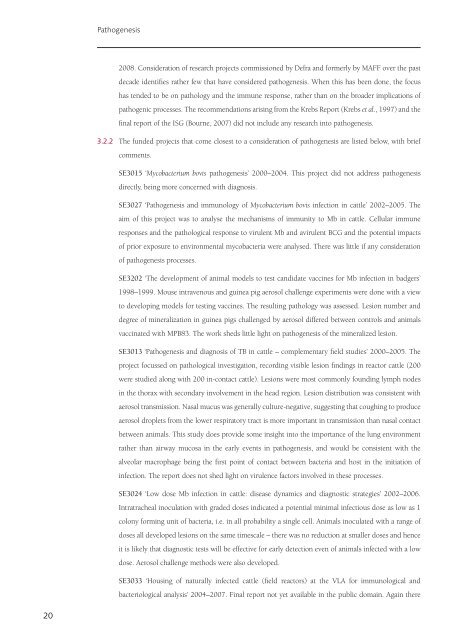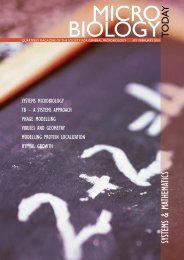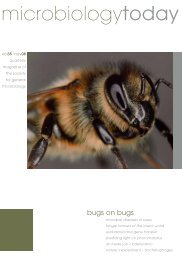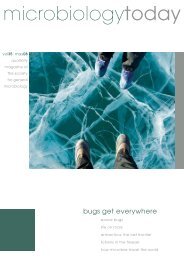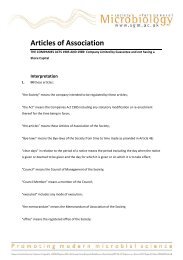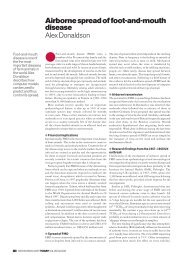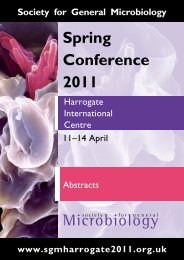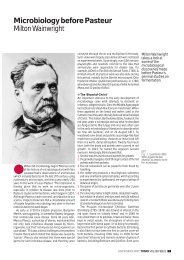final report - ARCHIVE: Defra
final report - ARCHIVE: Defra
final report - ARCHIVE: Defra
You also want an ePaper? Increase the reach of your titles
YUMPU automatically turns print PDFs into web optimized ePapers that Google loves.
Pathogenesis<br />
2008. Consideration of research projects commissioned by <strong>Defra</strong> and formerly by MAFF over the past<br />
decade identifies rather few that have considered pathogenesis. When this has been done, the focus<br />
has tended to be on pathology and the immune response, rather than on the broader implications of<br />
pathogenic processes. The recommendations arising from the Krebs Report (Krebs et al., 1997) and the<br />
<strong>final</strong> <strong>report</strong> of the ISG (Bourne, 2007) did not include any research into pathogenesis.<br />
3.2.2 The funded projects that come closest to a consideration of pathogenesis are listed below, with brief<br />
comments.<br />
SE3015 ‘Mycobacterium bovis pathogenesis’ 2000–2004. This project did not address pathogenesis<br />
directly, being more concerned with diagnosis.<br />
SE3027 ‘Pathogenesis and immunology of Mycobacterium bovis infection in cattle’ 2002–2005. The<br />
aim of this project was to analyse the mechanisms of immunity to Mb in cattle. Cellular immune<br />
responses and the pathological response to virulent Mb and avirulent BCG and the potential impacts<br />
of prior exposure to environmental mycobacteria were analysed. There was little if any consideration<br />
of pathogenesis processes.<br />
SE3202 ‘The development of animal models to test candidate vaccines for Mb infection in badgers’<br />
1998–1999. Mouse intravenous and guinea pig aerosol challenge experiments were done with a view<br />
to developing models for testing vaccines. The resulting pathology was assessed. Lesion number and<br />
degree of mineralization in guinea pigs challenged by aerosol differed between controls and animals<br />
vaccinated with MPB83. The work sheds little light on pathogenesis of the mineralized lesion.<br />
SE3013 ‘Pathogenesis and diagnosis of TB in cattle – complementary field studies’ 2000–2005. The<br />
project focussed on pathological investigation, recording visible lesion findings in reactor cattle (200<br />
were studied along with 200 in-contact cattle). Lesions were most commonly founding lymph nodes<br />
in the thorax with secondary involvement in the head region. Lesion distribution was consistent with<br />
aerosol transmission. Nasal mucus was generally culture-negative, suggesting that coughing to produce<br />
aerosol droplets from the lower respiratory tract is more important in transmission than nasal contact<br />
between animals. This study does provide some insight into the importance of the lung environment<br />
rather than airway mucosa in the early events in pathogenesis, and would be consistent with the<br />
alveolar macrophage being the first point of contact between bacteria and host in the initiation of<br />
infection. The <strong>report</strong> does not shed light on virulence factors involved in these processes.<br />
SE3024 ‘Low dose Mb infection in cattle: disease dynamics and diagnostic strategies’ 2002–2006.<br />
Intratracheal inoculation with graded doses indicated a potential minimal infectious dose as low as 1<br />
colony forming unit of bacteria, i.e. in all probability a single cell. Animals inoculated with a range of<br />
doses all developed lesions on the same timescale – there was no reduction at smaller doses and hence<br />
it is likely that diagnostic tests will be effective for early detection even of animals infected with a low<br />
dose. Aerosol challenge methods were also developed.<br />
SE3033 ‘Housing of naturally infected cattle (field reactors) at the VLA for immunological and<br />
bacteriological analysis’ 2004–2007. Final <strong>report</strong> not yet available in the public domain. Again there<br />
20


